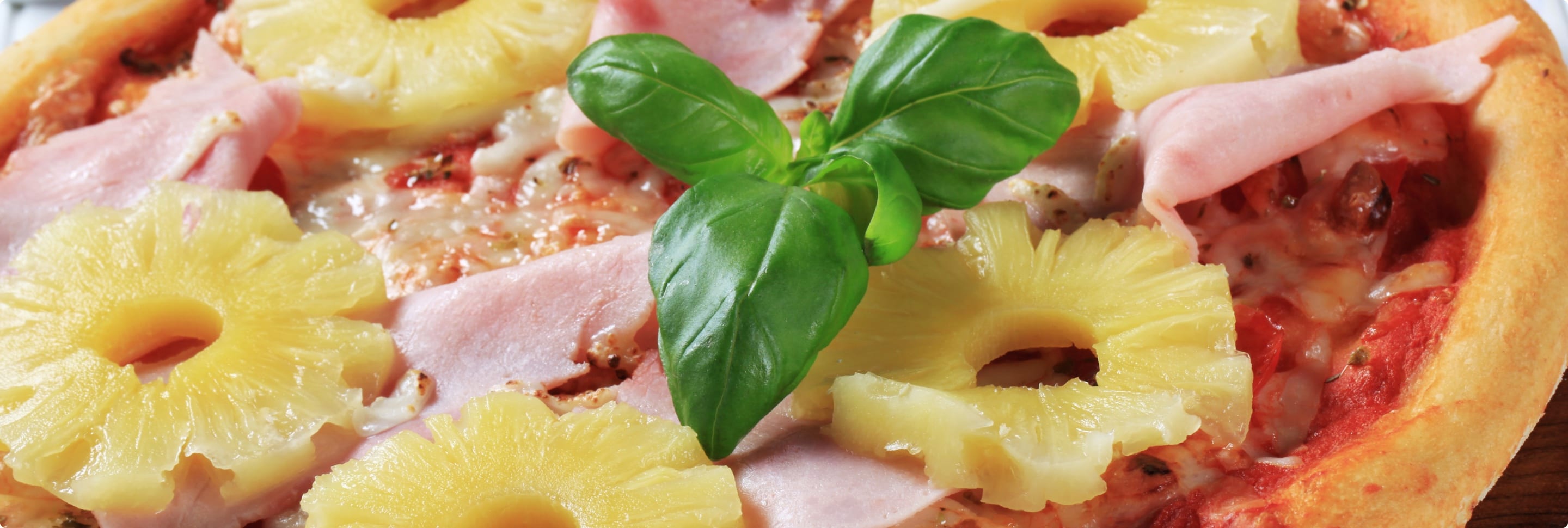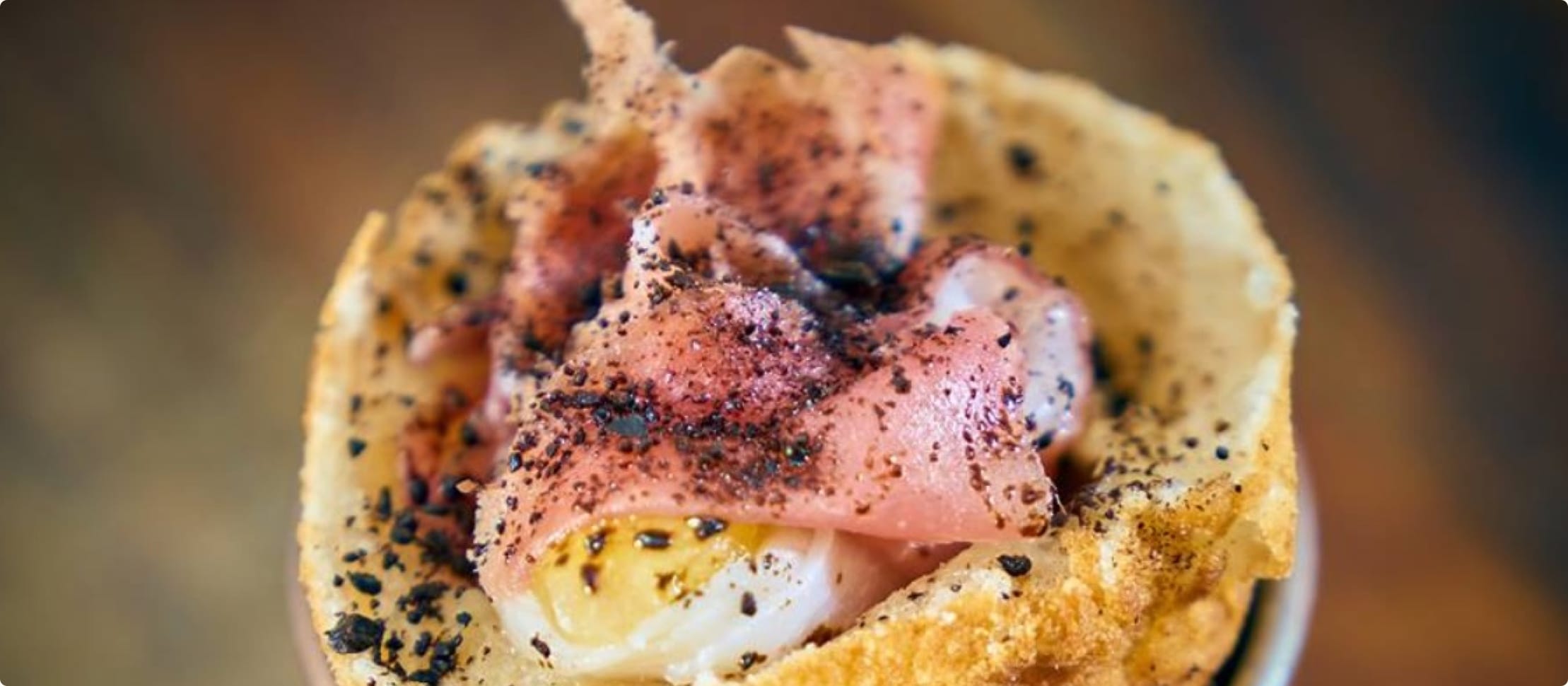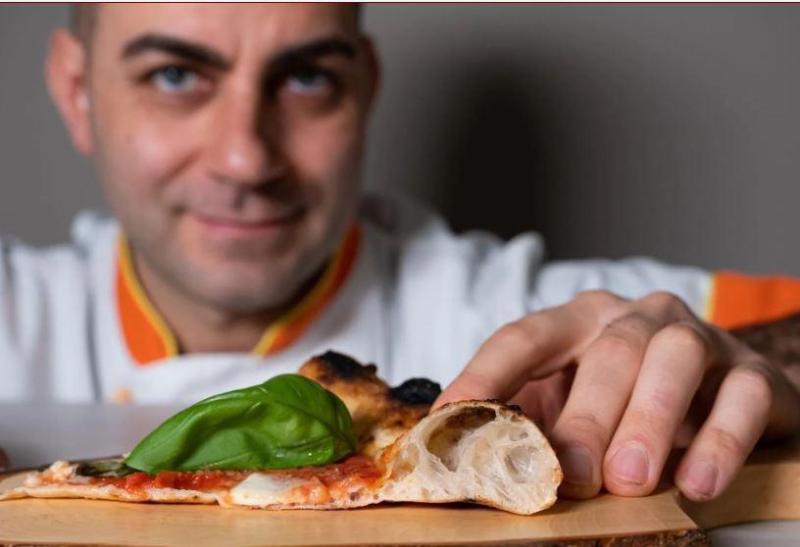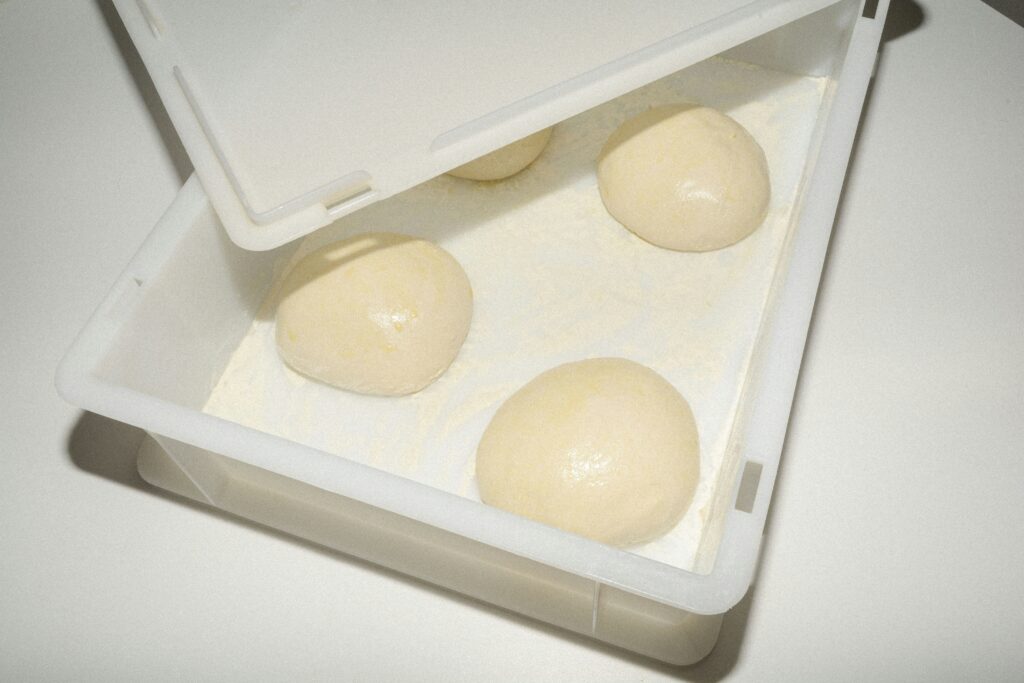
The origins of an unusual combination
It is difficult to win a hypothetical bet that questions the absolute planetary diffusion of pizza. Moreover, if in Italy it is an icon that triggers rankings, clamor and controversies, abroad it is almost as popular, even if it generates less attention. However, it is important not to forget how much tastes and eating habits change from one population to another and how much fillings – even the most unlikely ones – are affected for better or for worse.
PINEAPPLE PIZZA: A SIXTY-YEAR-LONG HISTORY
Pineapple pizza is no exception, with its almost sixty-year-long history. Needless to say, at first glance, any Italian who has ever heard of such a combination will tend to turn up their nose. Maybe they would change their mind when they’ll have the chance to taste the interpretation of an undisputed Master like Franco Pepe, who managed to create remarkable works of taste, starting from the famous Pizza Margherita “Sbagliata”, at his presidium in Caiazzo. Anyway, before being targeted by Pepe – in the noblest sense of the word – this pizza made its way through the streets of North America. It all began in 1962, when a Greek chef who moved to Ontario at the age of twenty, Sam Panopoulos, realized his idea of pineapple pizza after several attempts and a trip to the U.S. Convinced that they would have liked it thanks to its sweet taste (and also to the fact that pizza was not widespread in that area yet), he started serving it in a place called “The Satellite”; basically, it was a pizza Margherita with pineapple in syrup and cooked ham. Anyway, if in Canada it failed to achieve the expected success, in U.S. it became popular and took the name Hawaiian pizza. Someone claimed that the inspiration came to Panopoulos from the “Hawaii toast”, which was created by a German chef named Clemens Wilmenrod and stuffed with ham, cheese and pineapple; but the Greek categorically rejected the hypothesis.

AN INTERNATIONAL CASE
Considered by some to be even blasphemous, this pizza sparked quite heated debates all around the world, such as the one between Canadian Prime Minister Justin Trudeau and Icelandic President Guðni Thorlacius Jóhannesson, who called it “the mother of all gastronomic barbarism”. During a visit to a high school, when asked about his position on pineapple pizza by a group of students who loved it, he replied (jokingly, of course) that he was “firmly opposed to pineapple used as a topping”. He also admitted that if he had the chance, he would ban it from his country. All hell broke loose! It caused considerable turmoil on the social media, where it’s easy to find scandals of all levels. What was also called “pineapple-pizza-gate” ended with a Facebook post, in both Icelandic and English, titling “A statement on the pizza-controversy”. “I like pineapples, just not on pizza”, Jóhannesson explained, and he went on pointing out that he didn’t have the power to forbid people to put pineapples on their pizza and that he was glad not to hold such power. Declaring himself convinced that no one should have that power, he finally added that he would have never wanted to live in a country where a president can forbid what he does not like. “For pizzas, I recommend seafood” he concluded.

MASTER FRANCO PEPE’S NEW INTERPRETATION
Franco Pepe also created a bit of confusion when, during Identità Golose 2019 congress, he decided to propose his personal version of pineapple pizza, which became the dish of the year for the congress. Beyond any ranking validity, the pizza chef concerned is undoubtedly a recognized guru on the subject, so the attention index was shot up to the news of his experiment, which for him is a sort of reflection: “it is exactly the symbol of a philosophy and of how we are currently working on pizzas and on all kinds of ingredients.” He called it “AnaNascosta” and you can taste it in his Pepe in Grani pizzeria, in Caiazzo, in the province of Caserta. Apparently, it all started with a question from a journalist in Hong Kong, who asked him if he would ever try his hand at such a pizza. So Pepe began an analytical journey that led him to wonder whether a combination with pineapple stuffing would be a heresy, being conceivable only by distorted palates or instead, with the appropriate expedients, it could have worked even in a complex context like ours. First of all, in the original version, tomato was combined with pineapple, creating a sort of “double acidity”, which resulted in an unpleasant taste and a poor digestibility. Next thing, the fruit came from a jar, so it was in syrup, cooked and extremely rich in sugar. The sweetness of low quality cooked ham completed the combination. It was all about ingredients, therefore, but also about execution. How to deal with pineapple to make it taste good? First of all, you should not heat it but wrap it in a raw ham, specifically San Daniele ham, which provides a balanced saltiness. Then, you insert the pineapple wrapped in San Daniele ham into a fried cone, whose inside surface is covered with 12 month-old Grana Padano DOP. A sprinkling of licorice completes the work, making it undeniably fun and quite tasty to eat. Definitely, beyond any more or less justified prejudice, this creation by Franco Pepe should be tasted absolutely, not least because the pineapple is fresh and the frying is done properly, being neither too greasy nor too heavy.
From a strictly nutritional point of view, Pepe’s pizza is definitely lighter because fresh fruit has lower sugar content than fruit in syrup; moreover, being stored in tin cans, the latter also loses a lot of minerals compared to fresh one.
THE “HIDDEN” PINEAPPLE
So where does the name AnaNascosta come from? Actually, from the need to hide the fruit from view, so as to avoid a visual perception that could negatively affect the real taste evaluation (in Italian, it is a word play with ananas, meaning pineapple, and nascosta, meaning hidden). In fact, Pepe said that if he tried to propose a pineapple pizza to his customers they would certainly take him for crazy. “I suggest it to my clients without explaining to them what it is about, waiting for their reaction, which is always a pleasant surprise, for they don’t believe their taste buds” he added. In fact, flavors must communicate with each other, without any conditioning, and the answer must come exclusively from taste.



